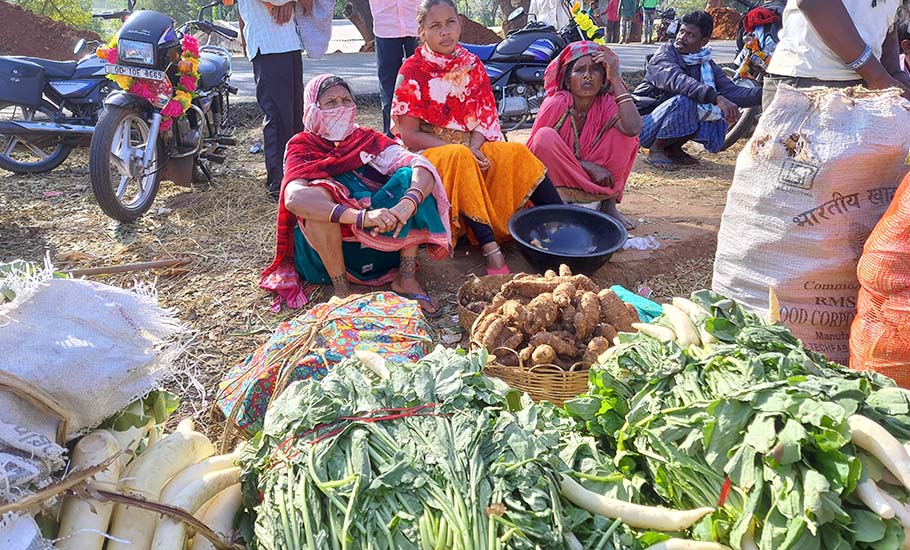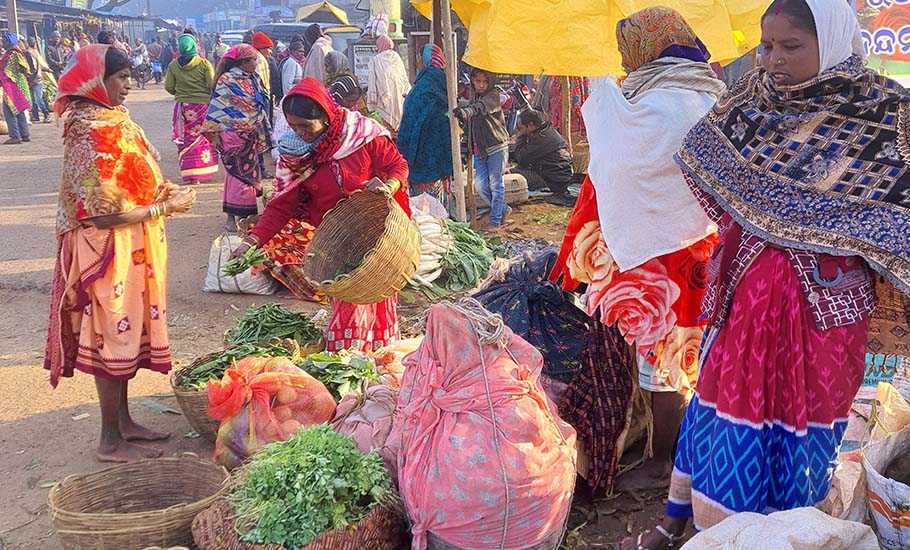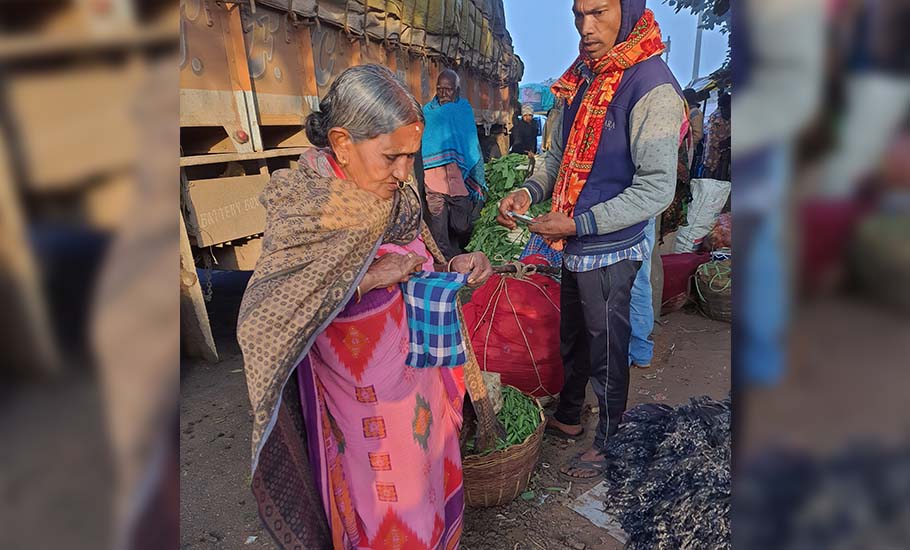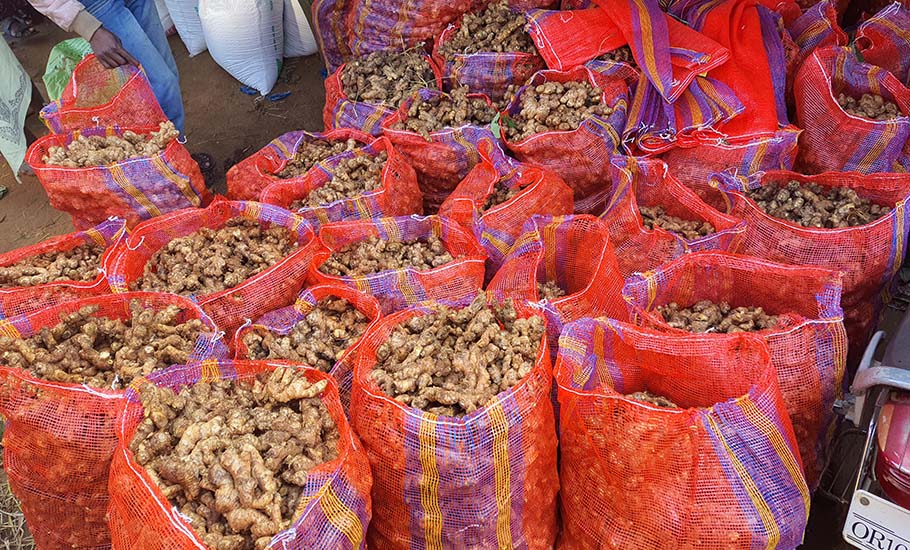
- Home
- News
- Analysis
- States
- Perspective
- Videos
- Education
- Entertainment
- Elections
- World Cup 2023
- Features
- Health
- Budget 2024-25
- Business
- Series
- NEET TANGLE
- Economy Series
- Earth Day
- Kashmir’s Frozen Turbulence
- India@75
- The legend of Ramjanmabhoomi
- Liberalisation@30
- How to tame a dragon
- Celebrating biodiversity
- Farm Matters
- 50 days of solitude
- Bringing Migrants Home
- Budget 2020
- Jharkhand Votes
- The Federal Investigates
- The Federal Impact
- Vanishing Sand
- Gandhi @ 150
- Andhra Today
- Field report
- Operation Gulmarg
- Pandemic @1 Mn in India
- The Federal Year-End
- The Zero Year
- Premium
- Science
- Brand studio
- Home
- NewsNews
- Analysis
- StatesStates
- PerspectivePerspective
- VideosVideos
- Entertainment
- ElectionsElections
- Sports
- Loading...
Sports - Features
- Budget 2024-25
- BusinessBusiness
- Premium
- Loading...
Premium

At this Odisha haat, the women mean business

It is still 10 minutes to 5. Visibility, as is usual for cold January mornings, has made everything beyond a few kilometres invisible as a thick fog has blanketed the area with temperatures plummeting below 10 degrees. In a corner, sitting around a fire with a few other women, Dumbi, a 60-year-old tribal woman, rubs her palms together. She then puts one palm to her face hoping to warm up...
It is still 10 minutes to 5. Visibility, as is usual for cold January mornings, has made everything beyond a few kilometres invisible as a thick fog has blanketed the area with temperatures plummeting below 10 degrees. In a corner, sitting around a fire with a few other women, Dumbi, a 60-year-old tribal woman, rubs her palms together. She then puts one palm to her face hoping to warm up the freezing cheeks as her eyes go gazing around leisurely. Still shivering, Dumbi moves both hands away from the fire, pulls out a tiny purse tucked into the petticoat, counts the notes before slipping the purse back.
Dumbi has already sold her two jhudis (bamboo containers) with about 40 kg of radish at the haat (open-air market). She has also picked up essentials for home. “I want to go back now,” says Dumbi, as she waits for the rest to wrap up for the day and head home. She, along with a group of villagers, had left for work at 3 am on an autorickshaw.
Metres away, unmindful of the biting chill, about 2,000 women and men are busy selling and buying heaps of fresh-from-the-field spinach, coriander leaves, green chillies, bananas, cauliflowers, cabbages, brinjals, radish, green peas, French beans, carrots, pumpkin and almost every other vegetable. It’s business hour and only a few like Dumbi can afford to relax.
The market is also flocked by those trying to sell forest goods, pottery, livestock and poultry, displaying their belongings on the ground. A few shops – run from permanent structures dealing in food items, groceries and fertilisers – are also crowded. By the roadside, hundreds of autorickshaws and pick-up vans are being loaded mostly with vegetables.

“Over 90 per cent of bulk trading was over by last night. Majority of the traders have left in the last one hour. Retail sale has begun and it will go on till afternoon,” informs Ramesh, 27, an auto driver.
Welcome to the Kunduli Haat. Nestled in the picturesque terrains of the Eastern Ghats and around 45 km from Odisha’s Koraput district headquarters town on the Raipur-Vishakhapatnam NH 26, this haat under Semiliguda block offers a delightfully unique spectacle.
It’s said that several decades ago the market was started by people of the Sana Paraja tribe and the Mali communities. The Mali community is well known for its farming acumen. Some even claim that once upon a time, the Kunduli Haat used to be the largest tribal weekly market in Asia.
Earlier, the market was organised once a week, but in the last few years, the frequency has doubled.
While the frequency has changed, the soul of the Kunduli Haat remains the same—the women of the Mali community and tribes, including Paraja, Durua and Gadaba from the Semiliguda and Pottangi blocks of Koraput. “Only the land preparation is done by the men. The women take the lead from sowing to selling. They do all the hard work,” says Sarat Patnaik, who runs Koraput Farmers’ Association, a non-governmental organisation.
While both men and women around a radius of 10-12 km carry the produce to the market, the men primarily deal with the traders from different parts of Odisha, Raipur (Chhattisgarh) and Andhra Pradesh’s Visakhapatnam thronging Kunduli. The retail business is, however, almost entirely the women’s domain.
Although a few male farmers participate in the retail trade, it is largely the local women who buy from farmers at a wholesale price and sell their goods to local consumers. Besides the business hub, Semiliguda, a couple of industrial townships such as Damanjodi (NALCO) and Sunabeda (Hindustan Aeronautics Limited) are located within 15-20 km.

Incidentally, till about a few years back, in the absence of proper roads, farmers used to manually carry the produce in Dala, Karli and Guli (bamboo-made containers of different sizes). Many walked, while some trekked. These days, with better road connectivity, most of them hire autorickshaws on a sharing basis to commute.
According to academician and researcher Mihir Jena, majority of these women above 50 years are unlettered while those in the 18-45 years age group are school dropouts. Experience has, however, helped them master the nuances and dynamics of the trade—production, sale, purchase and hard bargaining. “They are very simple, their business method is simple too,” explains Jena.
Surprisingly, there is no accurate figure of the business in this market. No formal study on the market has been undertaken as yet. Patnaik puts the average daily transaction at nearly Rs 1.25-1.50 crore. Add to it, the daily supply of truckloads of sweet potatoes, mangoes, baby jackfruits and ginger for more than a month during their respective seasons.
“Apart from bulk buyers from Bhubaneswar and Cuttack, traders from Raipur buy huge quantities of jackfruit and ginger. They supply the stock to north Indian states. Koraput’s ginger has a special taste,” says Maheswar Patra, a medicine shop owner. Patra has been living in Kunduli for over 25 years.
The women, including Dumbi and Saberi Jani (52), recall the hardships they suffered during demonetisation in 2016.
“It was very difficult to sell due to paucity of smaller notes,” recall both in unison. Some even tried to take the barter route, but failed. They limped back to normalcy after notes of smaller denominations returned in circulation.
But what hit them the hardest was COVID-19 pandemic and months of shutdown and lockdown in 2020 and again in 2021. Fear of the coronavirus and also penalty for violation of restrictions confined both the producers and consumers to their respective locations.
“Although vehicles were allowed to move, the haat remained largely deserted,” recalls Patra. “Some didn’t harvest, while others preferred to feed the produce to their domestic animals. Even the animals were bored with the food,” says an old lady of the Paraja tribe who wouldn’t share her name.
Laxmi, 54, a trader from Visakhapatnam, however, is in no mood to brood over the past. Having learnt from one of her two pick-up van drivers that goods have been loaded, she finishes off a plate of idli and vada in a huff.
One of the driver’s informs that Laxmi has been a regular at Kunduli market for over two decades.
“The vegetables of Kunduli have a huge demand in Visakhapatnam. She sells it to smaller vendors,” the driver shares in between sipping a hot cup of tea. It’s time to drive back the 180-odd km. “The profit isn’t bad either,” he says as he leaves.
The farmers are not as lucky, though. They don’t always get a fair price for the produce. They are exploited and often are victims of distress sale. A tribal woman from Sorisapadar village, who refuses to reveal her name, was left with little choice than to sell 50 kilos of ginger for a mere Rs 500.
One of the reasons for exploitation is that the farmers can’t carry the produce back. So they sell it in the market. It doesn’t matter if the return is less than the investment. In an unorganised market, they take profit and loss in their stride, and return home only to arrive early on the next haat day.

Incidentally, for the villagers, weekly markets are not all about selling and buying. The haats have a huge socio-cultural connection with the tribal communities, majority of whom live in inaccessible, remote pockets. Some of them have begun using mobile phones. It’s a different story that network connectivity is pathetic in their region.
Kapila Khemundu, who teaches sociology at the Central University of Odisha, Koraput, says the weekly market provides an opportunity for wider social networking for the tribal community and other natives. It’s the lifeline of the people as well as the rural economy.
“Haats have a special place in tribal life and the locals have an emotional attachment with the markets. These haats serve the purpose of socio-cultural exchanges, information sharing. It’s a venue to get together with friends and relatives,” says Khemundu.
It is thus not surprising that the villagers keenly look forward to the haats which lead to cultural exchanges, newer experiences, exposure to different languages, food habits, dressing and living styles inadvertently.
According to many, the mushrooming of weekly markets in different villages and places has impacted the footfall at Kunduli. The invasion of retail chains and their growing popularity is likely to throw up a challenge to the traditional haats like that of Kunduli.
“We must try and protect the sanctity and charm of the tribal markets,” says Khemundu.

